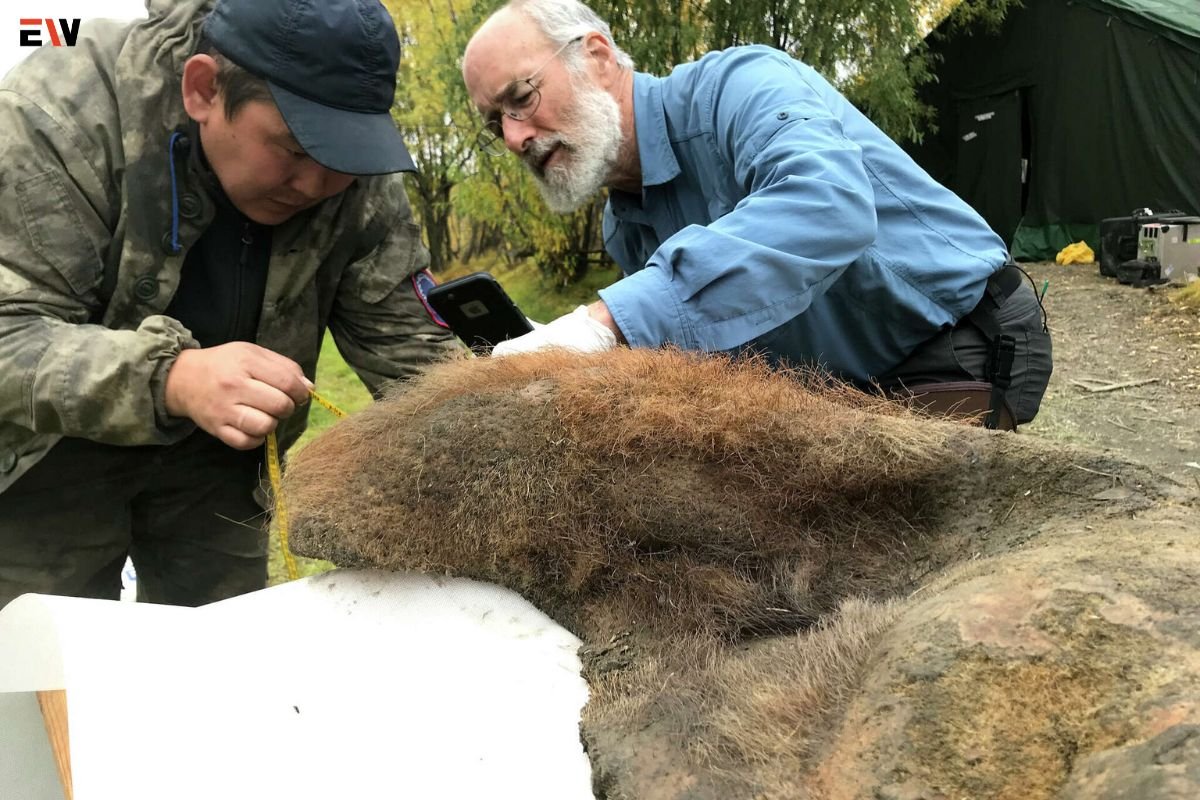Source – houstonchronicle.com
First-of-its-Kind Find in Siberia
Researchers have made a groundbreaking discovery by unearthing woolly mammoth skin from the Siberian permafrost, revealing fossil chromosomes for the first time. The remains, estimated to be 52,000 years old, were found near the village of Belaya Gora in northeastern Siberia in 2018. The freezing temperatures in the region helped preserve the chromosomes’ structure in remarkable detail.
Erez Lieberman Aiden, a professor at Baylor College of Medicine and co-corresponding author of the study, stated, “Fossil chromosomes have never been found before.” Unlike typical ancient DNA samples, which are often fragmented, these fossil chromosomes provide a much more complete genetic picture.
Preservation and Significance
The chromosomes, referred to as “non-mineralized fossils, or subfossils,” are well-preserved enough to reconstruct the woolly mammoth’s genome, according to Olga Dudchenko, an assistant professor at Baylor College of Medicine and co-first author of the study. “We strongly believe that this discovery opens up a new field with tremendous potential,” said Dudchenko.
Kevin Campbell, a professor at the University of Manitoba, highlighted the significance of this find. “This study demonstrates that ancient DNA can retain its 3D structure, even after tens of thousands of years,” he said. This preservation is akin to the process used in making beef jerky, where dehydration and cooling arrest DNA diffusion.
First Complete Woolly Mammoth Genome Found in Freeze-dried “Jerky”
Unique Preservation Conditions
The study suggests that the mammoth skin might have undergone a natural process similar to commercial dehydration, which preserved the DNA’s structure. Despite being well-preserved, the DNA was fragmented, yet the molecules remained relatively immobile. Lieberman Aiden compared the preservation to a book with unbound pages that stayed in place despite the binding being lost.
To test this preservation theory, researchers conducted experiments on beef jerky, confirming that DNA structure can withstand significant stress while remaining intact.
Implications for Paleogenomics
The discovery has allowed researchers to determine for the first time that woolly mammoths had 28 pairs of chromosomes, similar to modern elephants. Additionally, they were able to analyze individual genes and their activity, shedding light on traits like the regulation of hair follicles.
Dudchenko and her team believe this methodology can be applied to other ancient specimens. “We hope to find chromosome structures in museum specimens, expanding our understanding of various extinct species,” said Marcela Sandoval-Velasco, a guest researcher at the University of Copenhagen.
Exciting Prospects for Future Research
Experts in the field have expressed excitement about the study’s findings. Peter Heintzman, a paleogeneticist at Stockholm University, noted that this research unlocks a new frontier in paleogenomics. Dmitry Filatov, a professor at the University of Oxford, highlighted the unexpected quality of the chromosome-level reconstruction, which could stimulate further research.
Hendrik Poinar, director of the Ancient DNA Centre at McMaster University, called the paper “super exciting,” noting that the method could inspire novel ways to extract DNA from ancient tissues.
This discovery not only provides insights into the woolly mammoth’s genetic makeup but also opens new avenues for understanding the biology and evolution of other extinct species.










